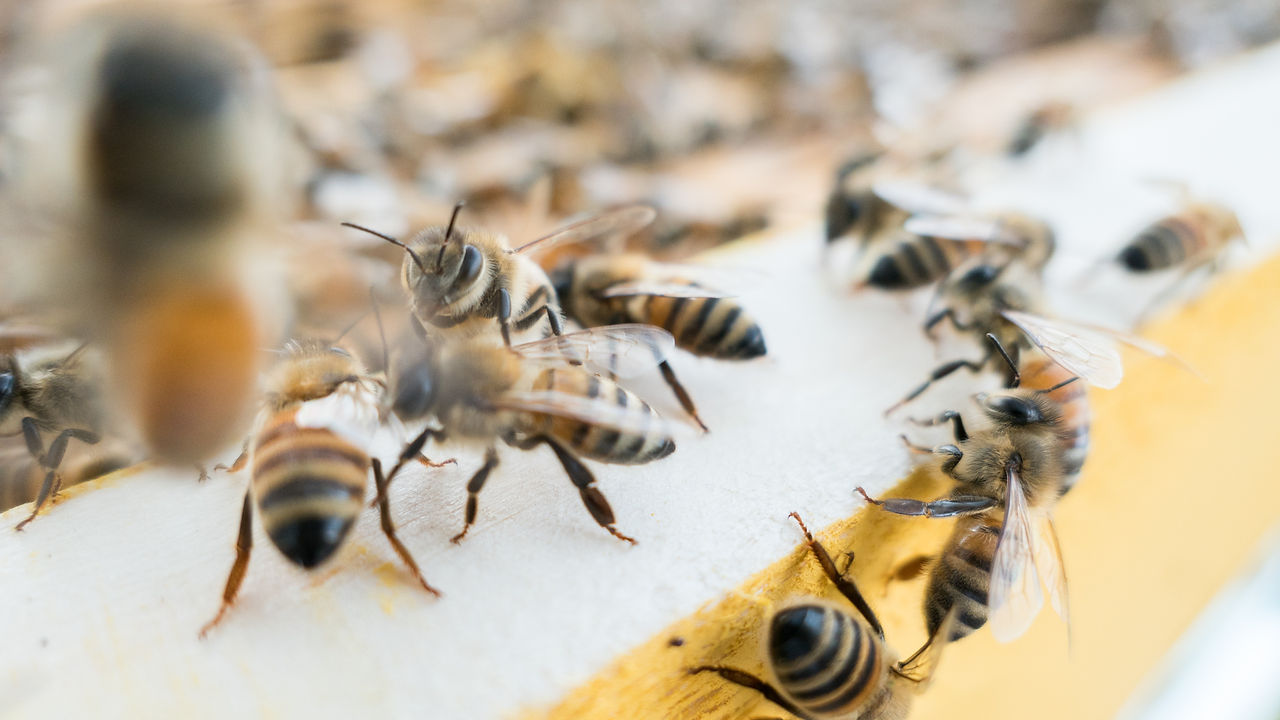
FAT BEES SKINNY BEES
FAT BEES SKINNY BEES -a manual on honey bee nutrition for beekeepers-
A report for the Rural Industries Research and Development Corporation
By Doug Somerville Livestock Officer (Apiculture) NSW Department of Primary Industries, Goulburn
RIRDC Publication No 05/054
RIRDC Project No DAN-186A
A summary of this enlightening research publication is provided below or you may want to click the link and download the full publication. Very interesting reading...….
Executive Summary:
Some facts about bee nutrition-
-
Nectar flows stimulate hygienic behaviour
-
Total protein in pollen is the most important factor = > 25% protein = excellent pollen < 20% protein = poor quality pollen
-
Fats in pollen act as strong attractants to foraging bees
-
Vitamins are unstable and deteriorate in stored pollen
-
Beekeepers should seriously consider providing sugar syrup to bees as a means of manipulating bee behaviour
-
If field pollen is scarce, the colony will cease rearing drone brood
Nectar:
-
Nectar consists of sucrose, water, some enzymes and minerals.
-
In ripening honey, moisture content is reduced to between 12-21%.
-
The colony will obtain most of its water requirement through nectar.
-
Honeys with high glucose (dextrose) levels (eg Canola) will candy more rapidly than honey with high fructose (laevulose) levels (eg Yellow Box –E.melliodora).
-
Dark honey generally has a richer mineral profile than light honey.
Pollen:
The principle compound of pollen is protein which is necessary for a honey bee colony’s survival and success, although the ratio between the different amino acids is very important.
Protein:
-
20-25% crude protein (CP %) in pollen is considered the minimum level.
-
With low amounts of pollen or pollen below 20% CP, the area of brood in the colony will be reduced.
-
2 Kg pollen @30% CP = 3 Kg pollen @20% CP. The demand for pollen within an Australian bee hive could be as much as 100 Kg per year.
-
Protein is made up of amino acids. The 10 amino acids that are essential for honey bee nutrition are: Threonine, Valine, Methionine, Isoleucine, Leucine, Phenylalanine, Histidine, Lysine, Arginine and Tryptophan.
-
The main limiting amino acid in pollen collected by bees is Isoleucine. Much eucalypt pollen is significantly lower in this amino acid than in introduced species.
Fat:
-
Fat refers to lipid which is composed of fatty acids, sterols and phospholipids.
-
Normally bees get sufficient fat from pollen.
-
The most important fat for brood rearing is cholesterol.
-
Fats in pollen act as strong attractants to foraging honey bees.
-
Eucalypt pollen has a very low fat level (1 – 2 %) when compared to Brassicas ( eg Canola, Wild Radish) that range from 6- 20 %.
-
One research project reports that linoleic acid in pollen inhibits growth of bacteria that causes European Foul Brood (EFB) and American Foul Brood (AFB).
-
A number of other fatty acids are also known to have anti-microbial properties.
Minerals:
-
Little is known about the mineral requirements of honey bees.
-
Excessive levels of minerals can limit brood rearing.
Vitamins:
Vitamin B complex is essential for most insects including honey bees. Pollen is an excellent source of these vitamins.

